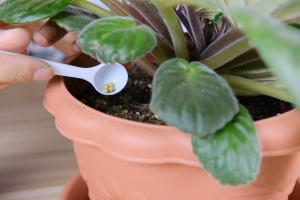How to Measure Plant Water Uptake
Plants require water for their growth and development. Understanding how much water plants take up from the soil is crucial for determining the water needs of plants and managing water resources. Measuring plant water uptake is not a straightforward task as it depends on various factors such as soil type, root density, and plant species. In this article, we will explore different methods for measuring plant water uptake.
Method 1: Soil Water Balance
The soil water balance method involves measuring the amount of water added to the soil and the amount lost through evapotranspiration and drainage. The difference between the two values provides an estimate of plant water uptake. This method is suitable for large-scale studies and long-term monitoring. However, it requires expensive equipment and skilled technicians to install and maintain the instruments.
Method 2: Stable Isotope Tracing
The stable isotope tracing method involves adding a known quantity of stable isotopes of water to the soil or irrigation water. Plants take up the isotopic water, and the ratio of the isotopes in the plant tissue is measured. The difference in the isotopic ratio between the soil water and plant tissue provides an estimate of plant water uptake. This method has high accuracy and is suitable for measuring the water uptake of individual plants or small plots.
Method 3: Neutron Probe
The neutron probe method involves using a neutron probe to monitor changes in soil moisture content. The probe measures the number of neutrons that pass through the soil, which is proportional to soil moisture content. By measuring the change in soil moisture content over time, the rate of water uptake by plants can be estimated. This method is suitable for measuring the water uptake of individual plants, but it requires expensive and specialized equipment.
Method 4: Sap Flow Technique
The sap flow technique involves measuring the rate of sap flow in plant stems. The method works by heating a section of the stem and measuring the temperature difference between the heated and unheated sections. The rate of heat transfer provides an estimate of the rate of sap flow, which is proportional to the rate of water uptake. This method is suitable for measuring the water uptake of individual plants and can provide information about water use efficiency.
Method 5: Plant Water Potential
The plant water potential method involves measuring the water potential of plant tissue. Water potential is the force that drives water movement in plants, and it is a measure of the potential energy of water. By measuring the difference in water potential between the soil and plant tissue, the rate of water uptake can be estimated. This method is suitable for measuring the water uptake of individual plants but requires specialized equipment.
Conclusion
Measuring plant water uptake is crucial for understanding plant water requirements and managing water resources. Different methods can be used depending on the scale of the study, the type of plant, and the available resources. The soil water balance method is suitable for large-scale studies, while stable isotope tracing is suitable for measuring the water uptake of individual plants. The neutron probe and sap flow technique require expensive equipment, while measuring plant water potential requires specialized equipment. Choose the method that suits your needs and resources, and get accurate estimates of plant water uptake.

 how many times do yo...
how many times do yo... how many planted tre...
how many planted tre... how many pine trees ...
how many pine trees ... how many pecan trees...
how many pecan trees... how many plants comp...
how many plants comp... how many plants can ...
how many plants can ... how many plants and ...
how many plants and ... how many pepper plan...
how many pepper plan...
































